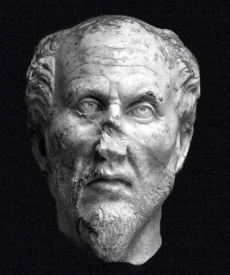Plotinus: Difference between revisions
No edit summary |
|||
| (One intermediate revision by one other user not shown) | |||
| Line 12: | Line 12: | ||
*[http://www.philaletheians.co.uk/Study_notes/Mystic_Verse_and_Insights/Plotinus_on_the_Dual_Aphrodite.pdf# Plotinus on the Dual Aphrodite-Venus] at Philaletheians website | *[http://www.philaletheians.co.uk/Study_notes/Mystic_Verse_and_Insights/Plotinus_on_the_Dual_Aphrodite.pdf# Plotinus on the Dual Aphrodite-Venus] at Philaletheians website | ||
*[http://www.philaletheians.co.uk/Study_notes/Secret_Doctrine's_Proposition_1/Proposition_1_-_Centre_+_Circle.pdf# Plotinus and the First Fundamental Proposition of the Secret Doctrine] at Philaletheians website | *[http://www.philaletheians.co.uk/Study_notes/Secret_Doctrine's_Proposition_1/Proposition_1_-_Centre_+_Circle.pdf# Plotinus and the First Fundamental Proposition of the Secret Doctrine] at Philaletheians website | ||
*[https://www.theosophy.world/encyclopedia/plotinus Plotinus] in Theosophy World | |||
===Books=== | ===Books=== | ||
Latest revision as of 15:52, 22 November 2023
Plotinus (Greek: Πλωτῖνος; c. 204/5 – 270) was a major philosopher of the ancient world in that school of thought known today as Neoplatonism. His teacher was Ammonius Saccas. His metaphysical writings have inspired centuries of Pagan, Christian, Jewish, Islamic and Gnostic metaphysicians and mystics.
In her Theosophical Glossary, Mme. Blavatsky wrote:
Plotinus. The noblest, highest and grandest of all the Neo-Platonists after the founder of the school, Ammonius Saccas. He was the most enthusiastic of the Philaletheans or “lovers of truth”, whose aim was to found a religion on a system of intellectual abstraction, which is true Theosophy, or the whole substance of Neo-Platonism. If we are to believe Porphyry, Plotinus has never disclosed either his birth-place or connexions, his native land or his race. Till the age of twenty-eight he had never found teacher or teaching which would suit him or answer his aspirations. Then he happened to hear Ammonius Saccas, from which day he continued to attend his school. At thirty-nine he accompanied the Emperor Gordian to Persia and India with the object of learning their philosophy. He died at the age of sixty-six after writing fifty-four books on philosophy. So modest was he that it is said he “blushed to think he had a body”. He reached Samâdhi (highest ecstasy or “reunion with God” the divine Ego) several times during his life. As said by a biographer, “so far did his contempt for his bodily organs go, that he refused to use a remedy, regarding it as unworthy of a man to use means of this kind”. Again we read, “as he died, a dragon (or serpent) that had been under his bed, glided through a hole in the wall and disappeared”--a fact suggestive for the student of symbolism. He taught a doctrine identical with that of the Vedantins, namely, that the Spirit Soul emanating from the One deific principle was, after its pilgrimage, re-united to It.[1]
Online resources
Articles
- Plotinus at WisdomWorld.org
- The Good of Plotinus by Thomas Taylor
- Plotinus on the Dual Aphrodite-Venus at Philaletheians website
- Plotinus and the First Fundamental Proposition of the Secret Doctrine at Philaletheians website
- Plotinus in Theosophy World
Books
- Plotinus' Enneads Translated by MacKenna and B. S. Page.pdf
- From the Enneads: On the Beautiful and the Intelligible Beauty by Plotinus
Notes
- ↑ Helena Petrovna Blavatsky, The Theosophical Glossary (Krotona, CA: Theosophical Publishing House, 1973), 256.
